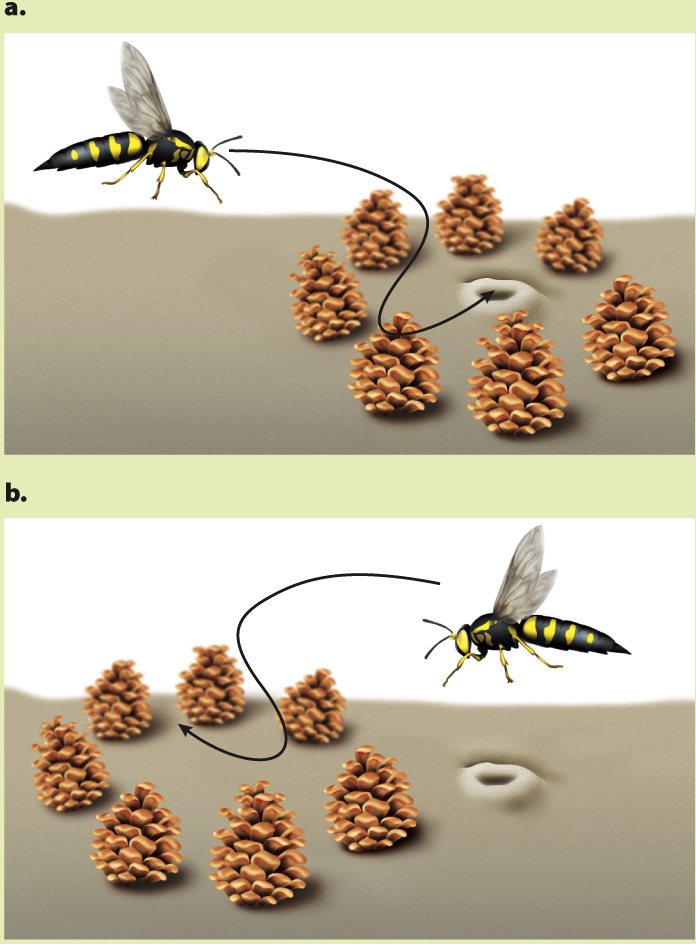HOW DO WE KNOW?
FIG. 45.10
To what extent are insects capable of learning?
BACKGROUND European digger wasps, Philanthus triangulum, live in the sand. These wasps are sometimes called “bee wolves” because they specialize on hunting for honeybees to feed their developing young. After mating, each female digs a long burrow with a few chambers at the end where she lays her eggs. She then forages for honeybees that she brings back to these chambers for her larvae to eat. The wasp faces a navigational challenge: Having captured her prey, how can she find her way back to and recognize her nest? Niko Tinbergen noticed that wasps lingered briefly near a new nest before heading off to hunt, and thought that they were learning local landmarks associated with the nest.
HYPOTHESIS The wasp learns visual cues around her nest to help her locate it upon her return.
METHOD Tinbergen recognized that a good test of the learning abilities of an insect should take place in its natural environment. He combined his skills as a naturalist and as an experimentalist to devise an elegant demonstration of the way in which female wasps learn landmarks for navigation. Tinbergen’s approach was simple. He placed a ring of pine cones around the nest of a wasp, and then, once she had left to hunt, he shifted them to a new location away from the nest entrance. If visual cues are key, the wasp would return to the displaced pine cone ring. On the other hand, if cues are, for example, olfactory, she would return directly to the nest.
RESULTS Females carried out a brief landmark-

CONCLUSION Female digger wasps learn and then use local landmarks, such as the experimental ring of pine cones, as cues to the nest location.
SOURCE Tinbergen, N. 1958. Curious Naturalists. New York: Basic Books.